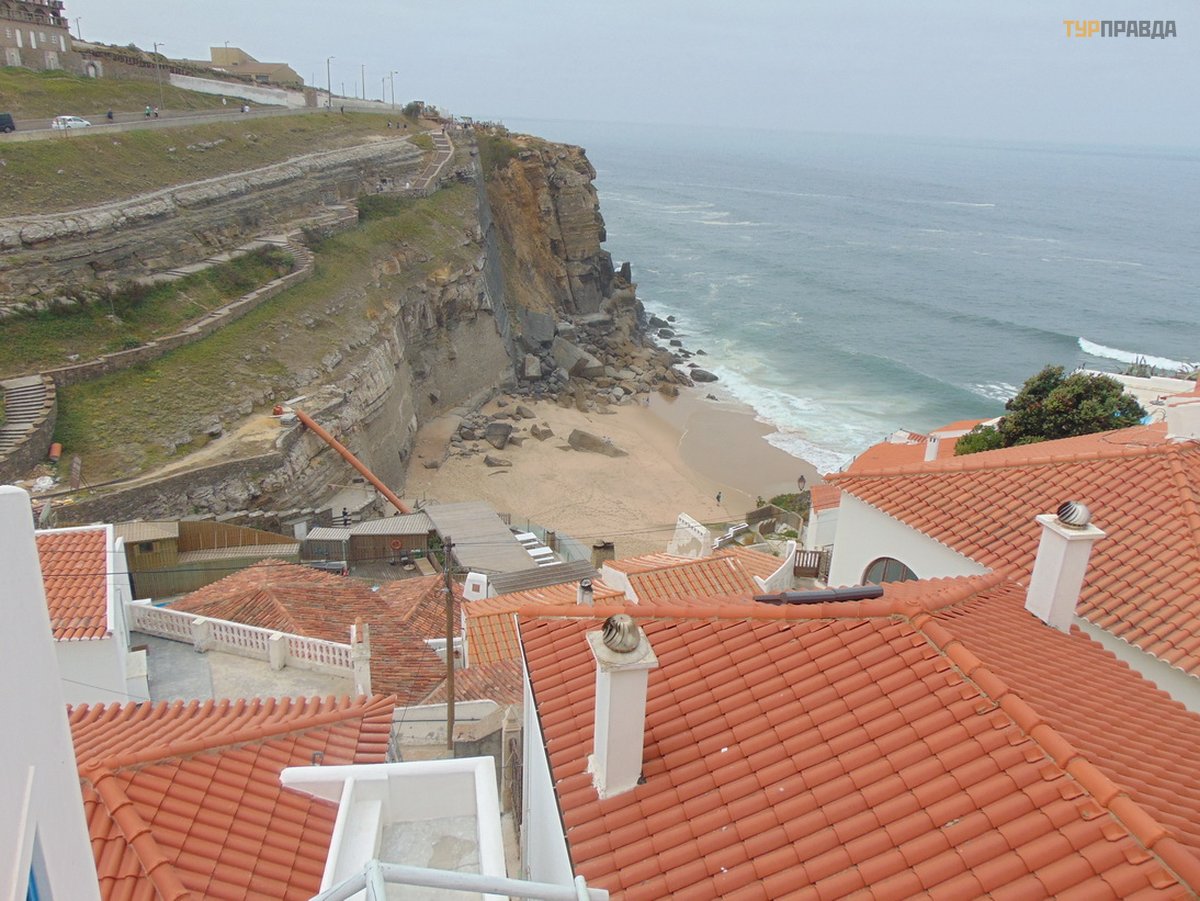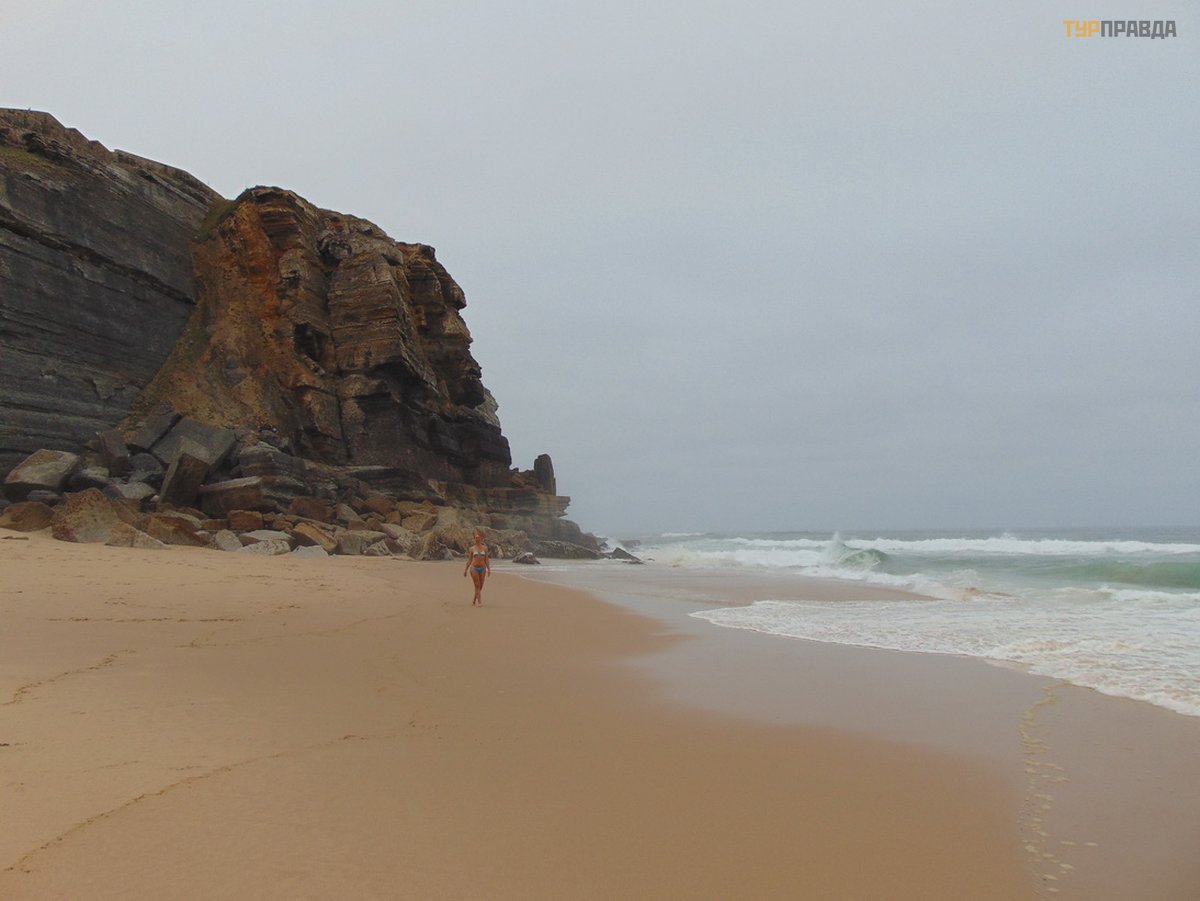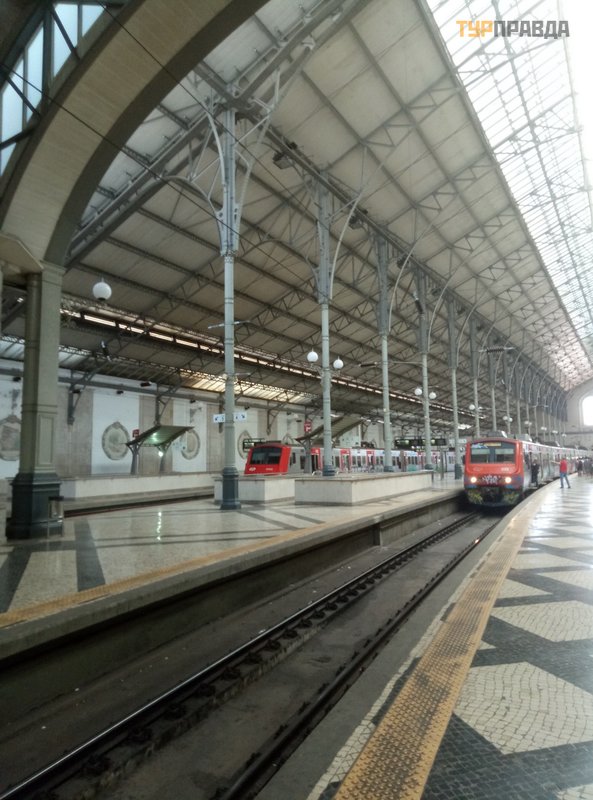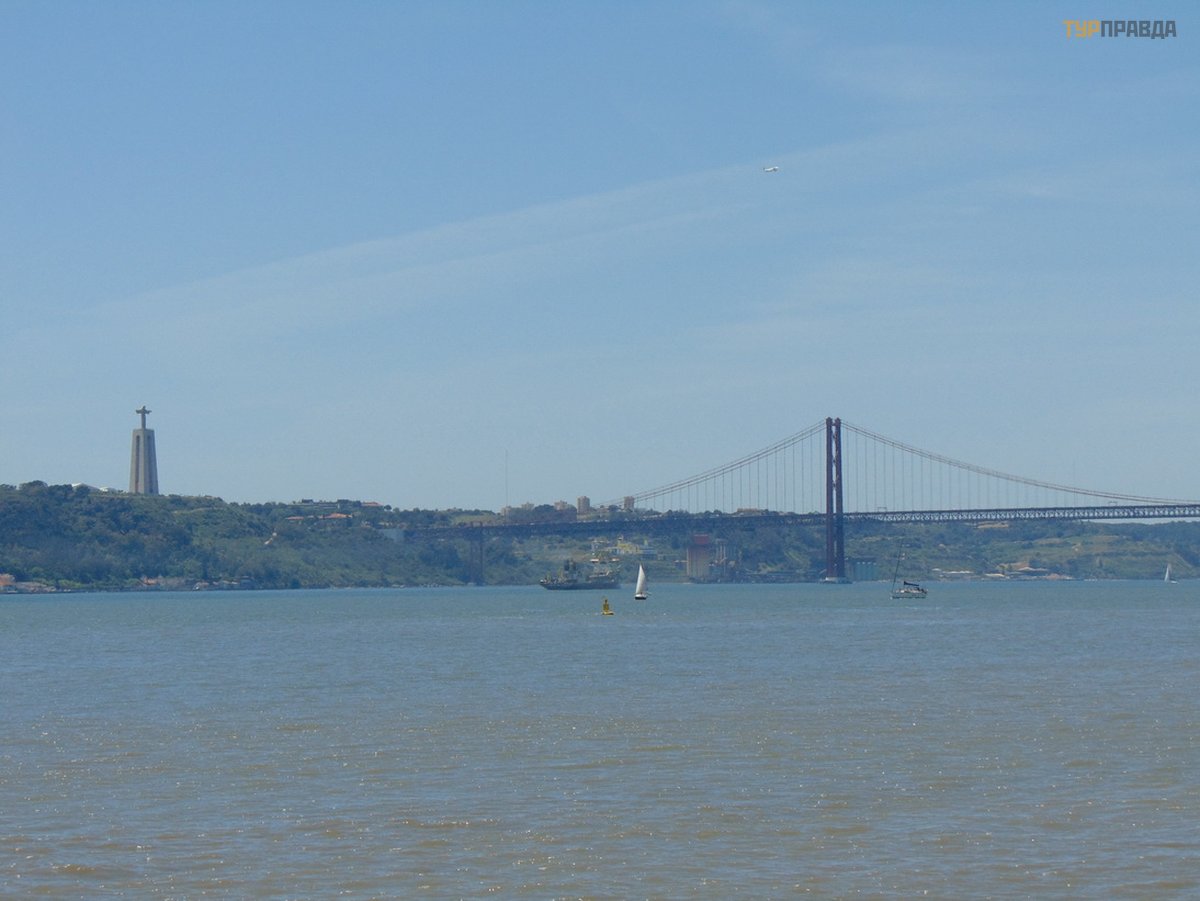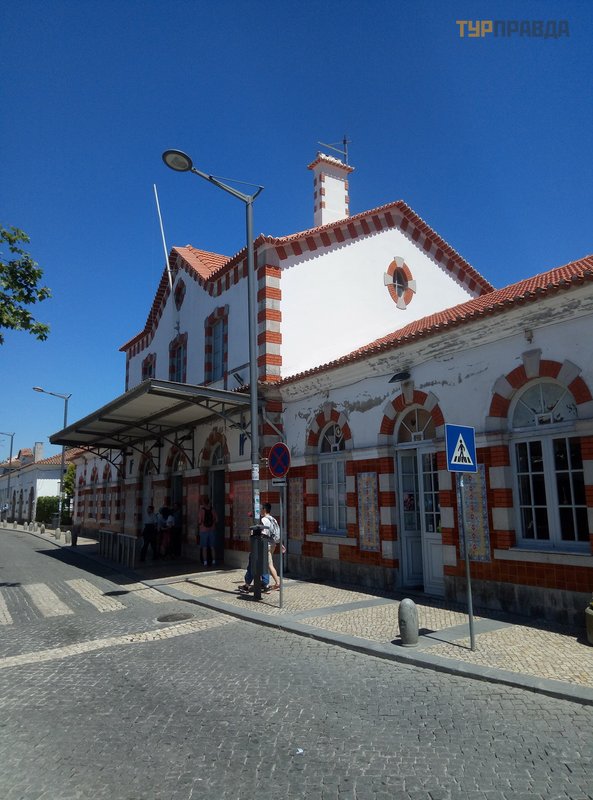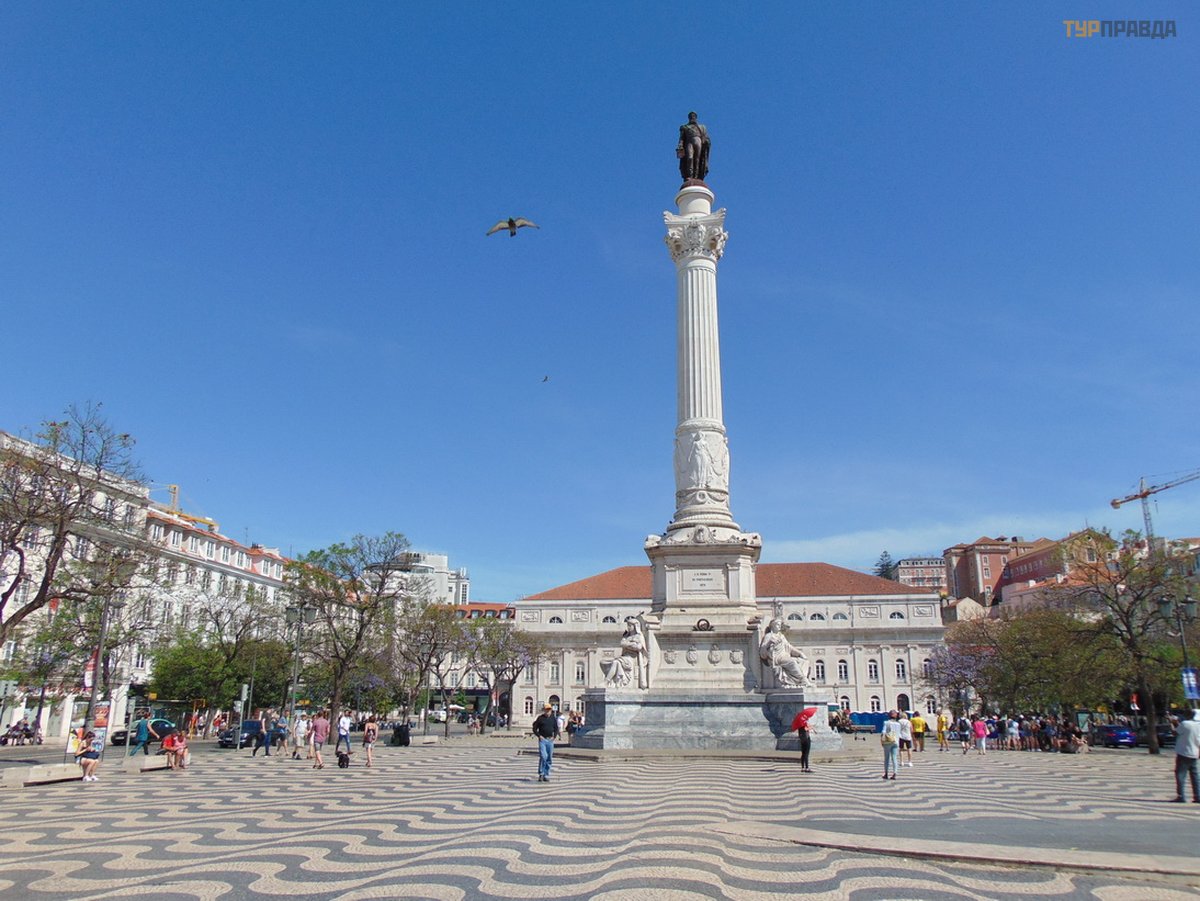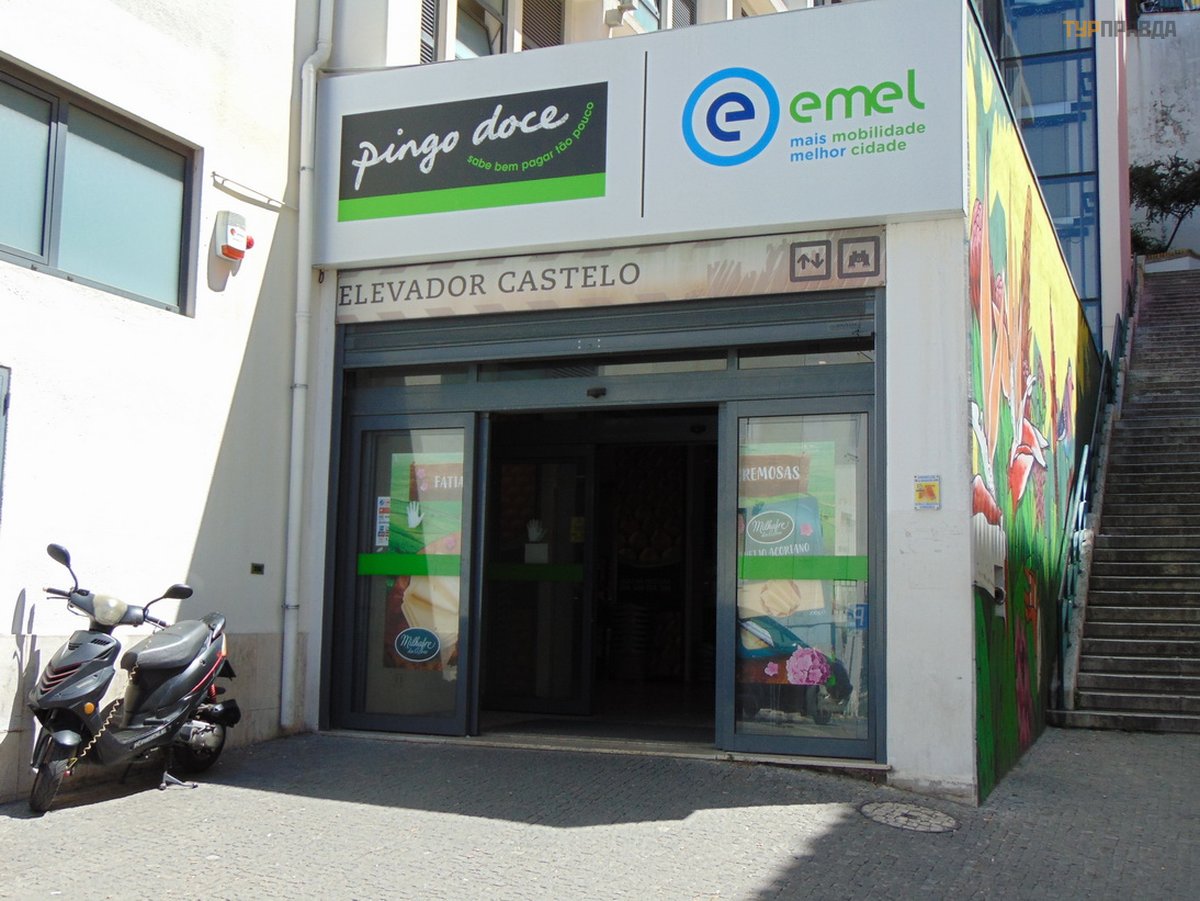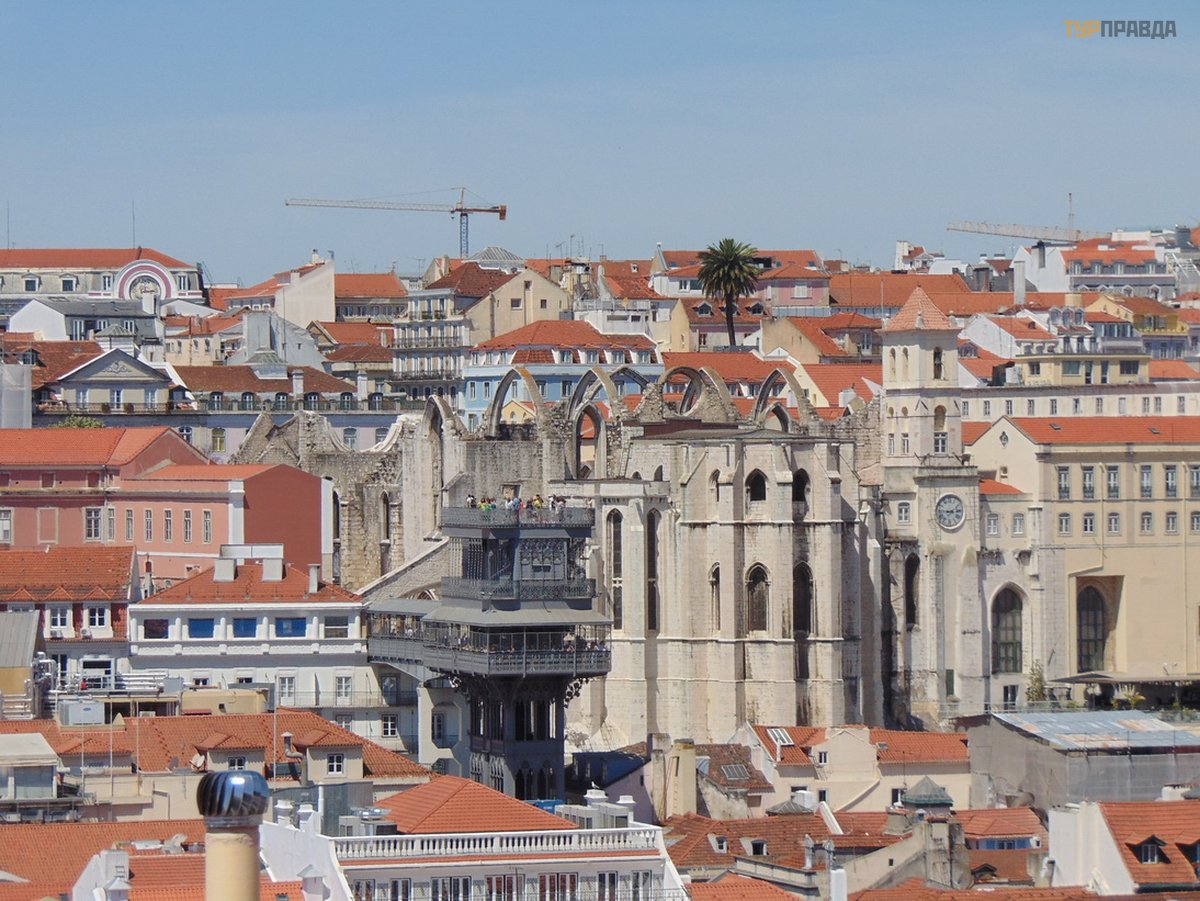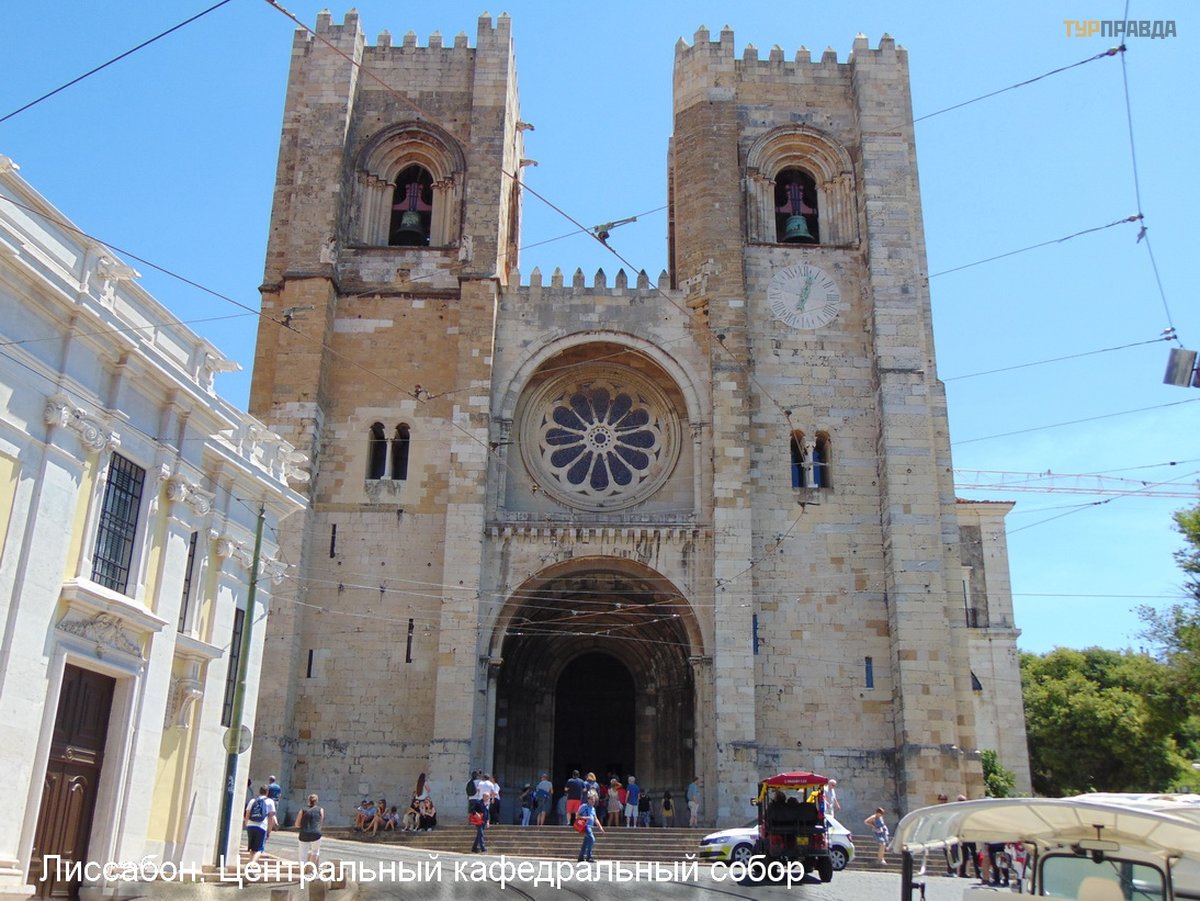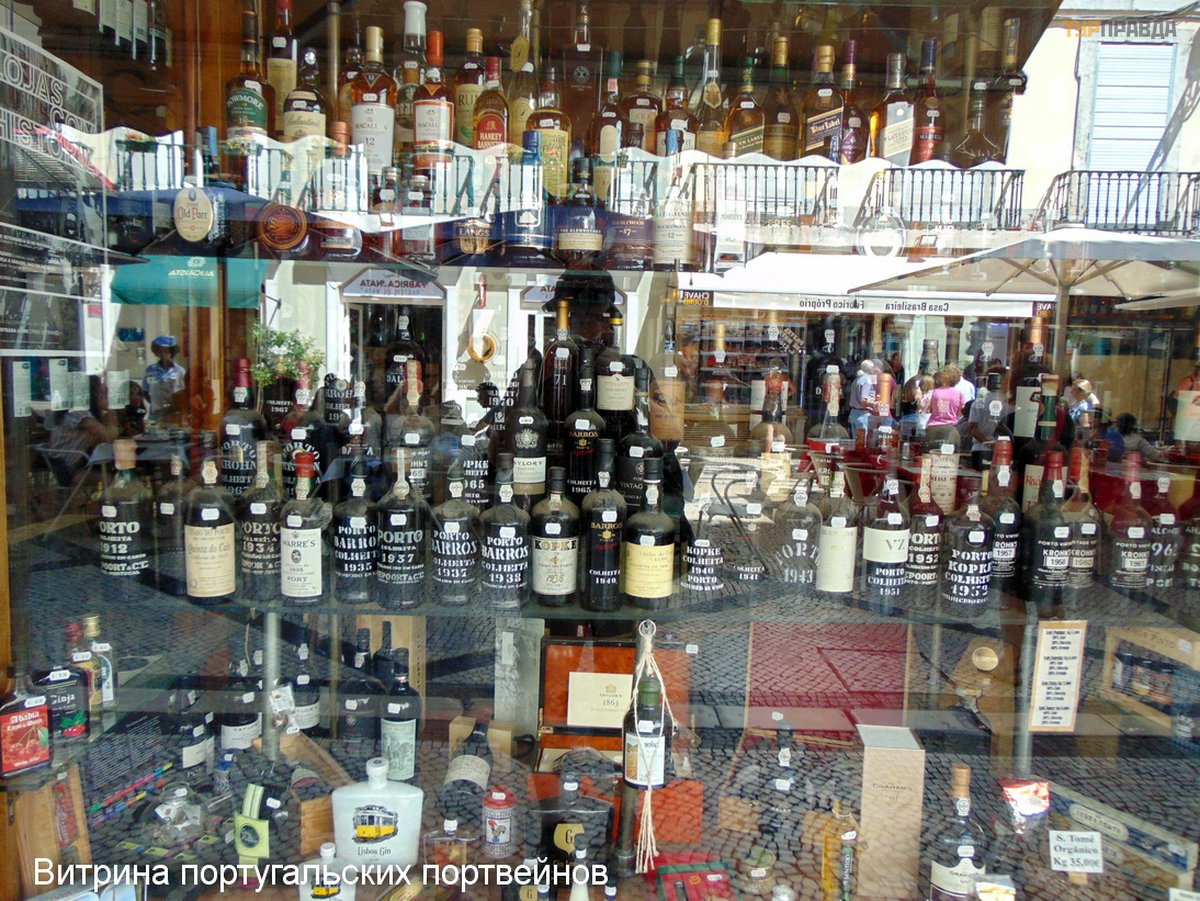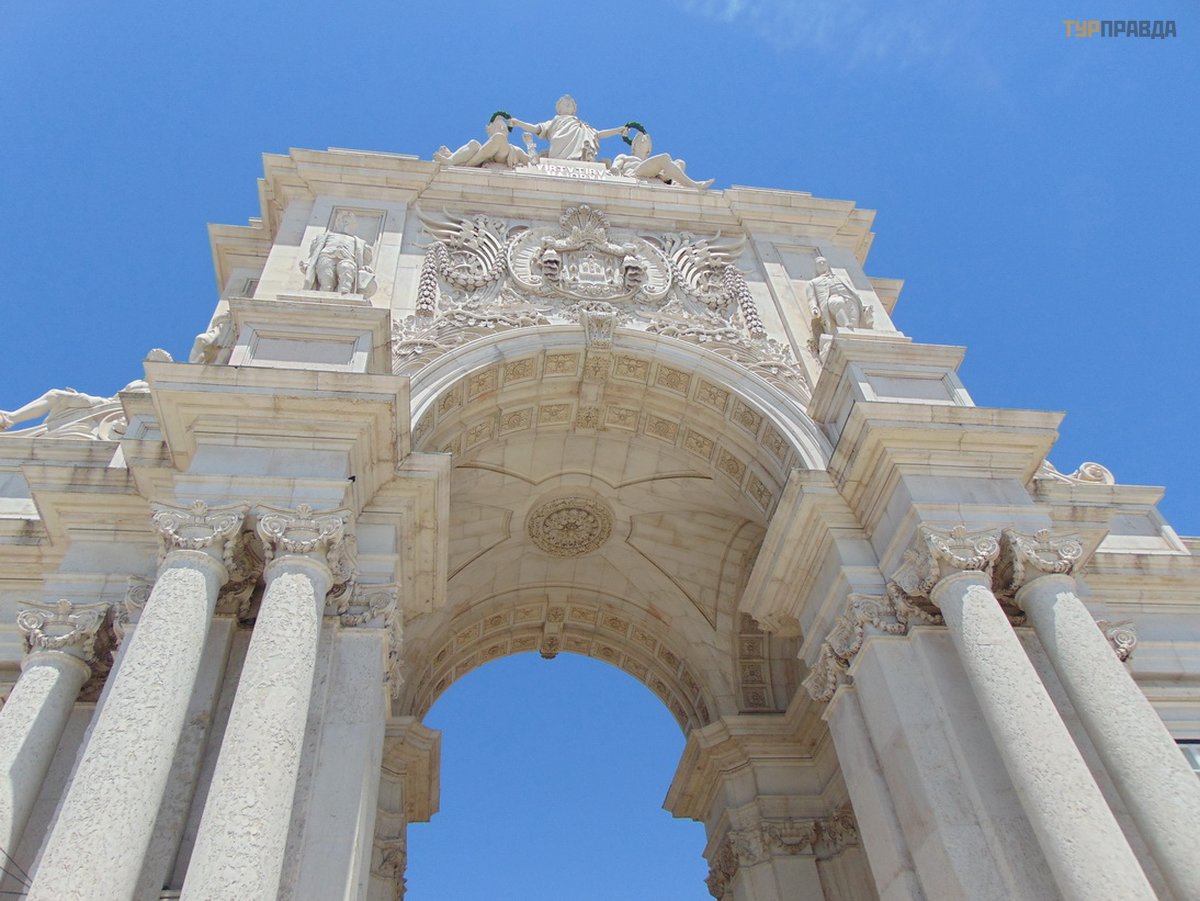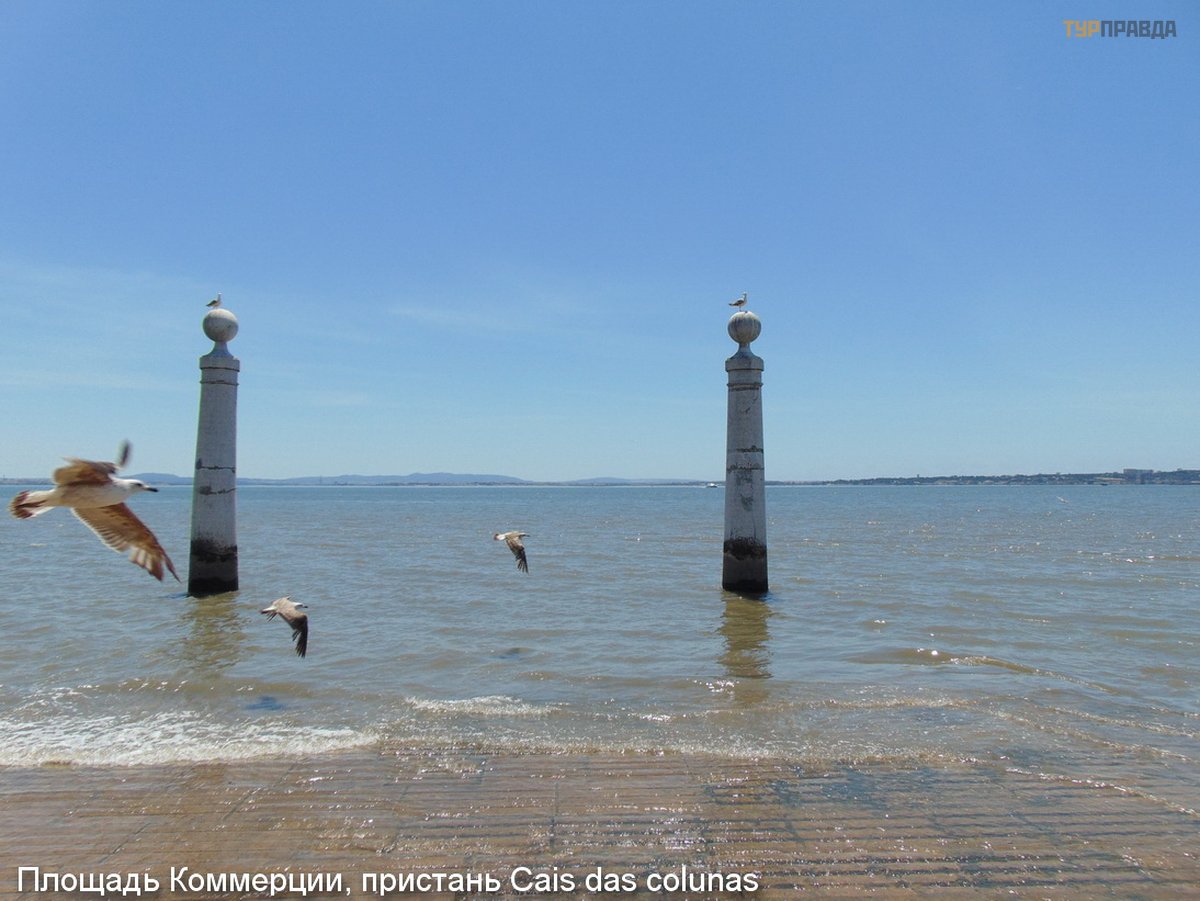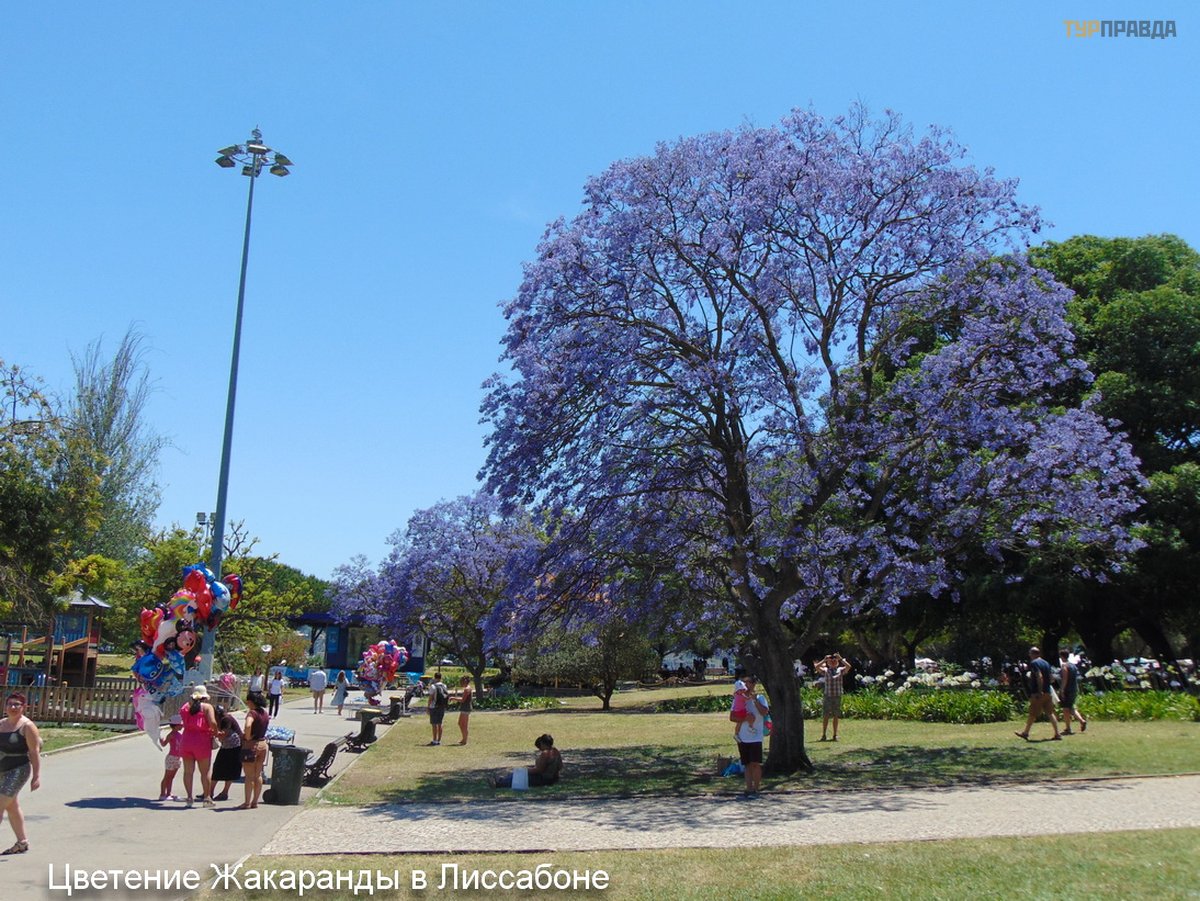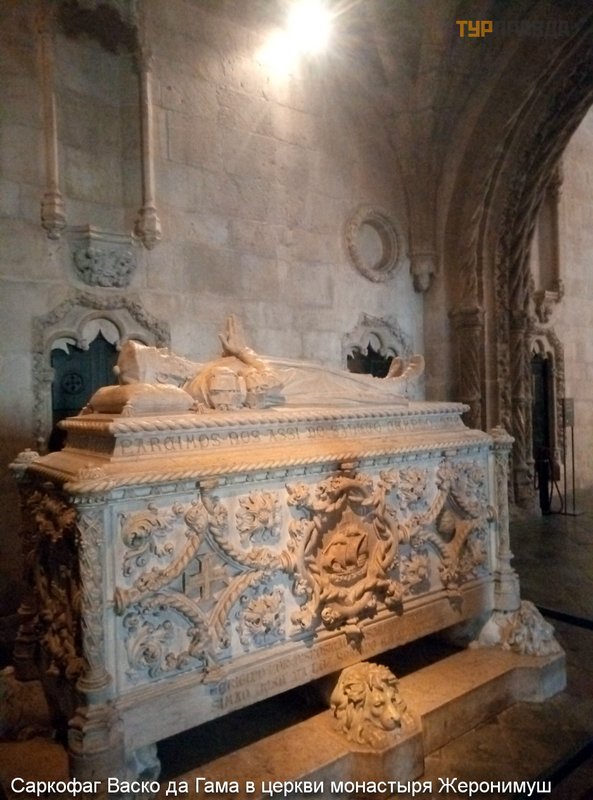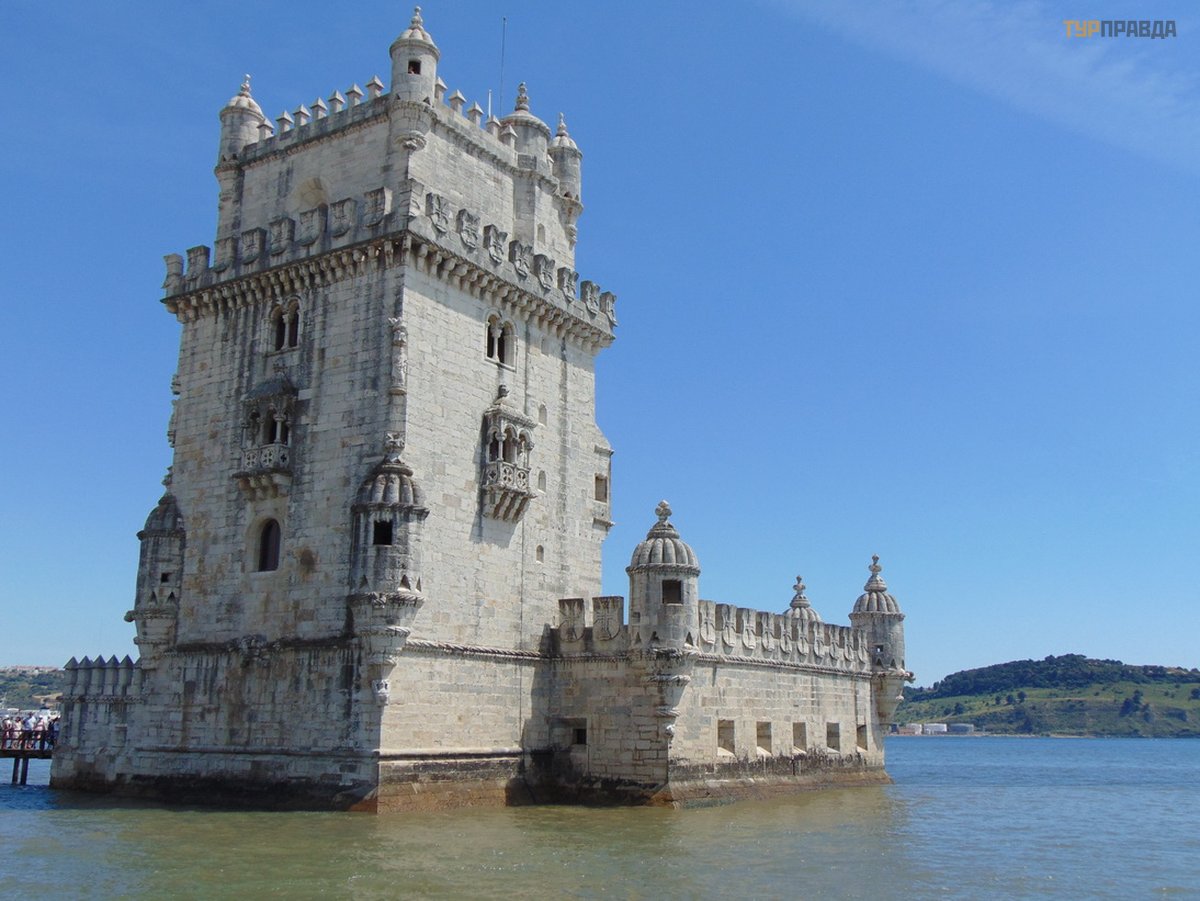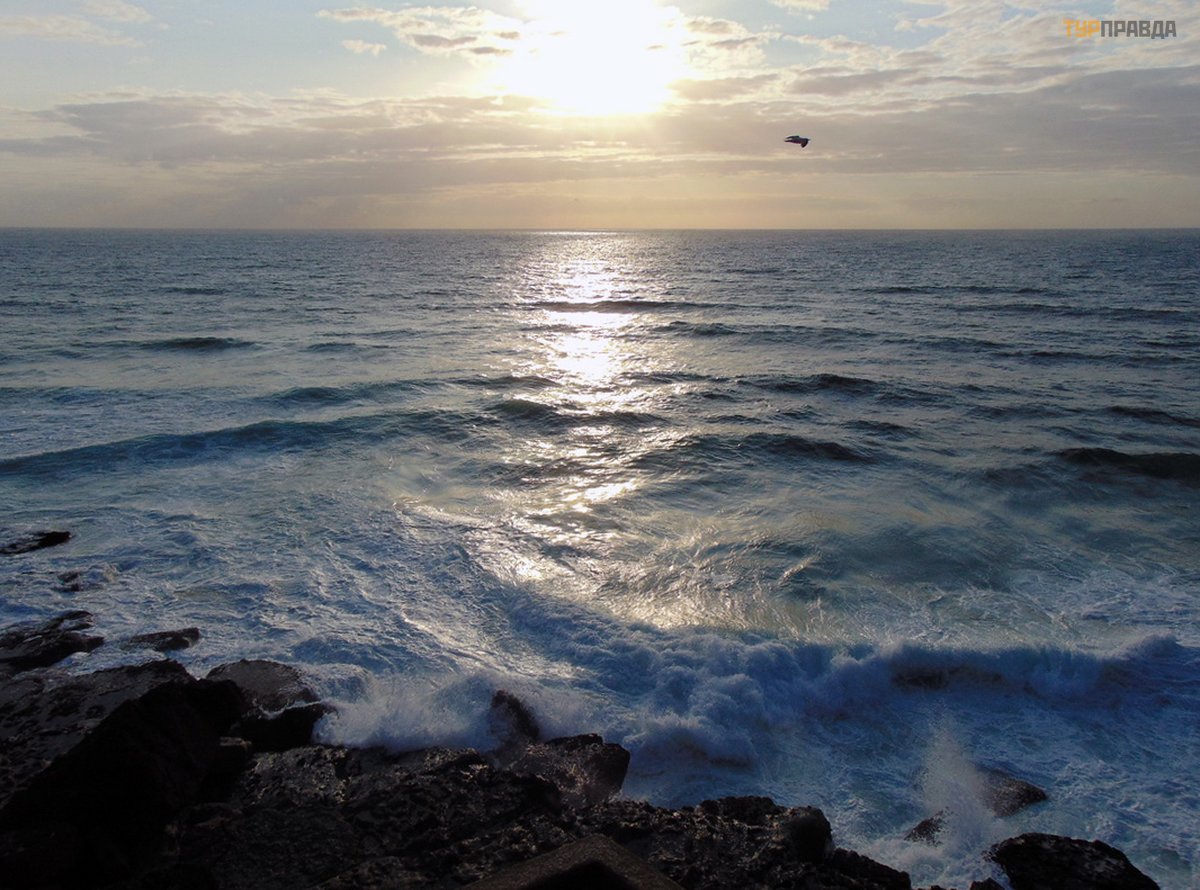Portugal: Sintra's palaces, the ocean and the edge of the world. Part 3
Continued,
Although we came to the ocean,
to sunbathe and be lazy, in this mode we had enough for one day. The next day we planned a hike to the nearest village Azeinash until March.
This village is flashing in almost all tourist avenues.
 Drinking fountain in the village of Azeinash do Mar
Drinking fountain in the village of Azeinash do Mar
The village is very photogenic, albeit microscopic.
But the most important thing that attracts tourists here is the ocean pool, which is flooded by waves during the storm, the water in it warms up and you can swim, regardless of the weather. We debunk another tourist myth!
The pool exists, but the first thing that catches your eye when you look at it from a height is something too much sand in the pool. Going down, you realize that the pool is a little above the knee in the deepest place.
 " Deep "ocean basin in Azeinash until March
" Deep "ocean basin in Azeinash until March
It's not about swimming, there is nowhere for an adult to sit. Plus the locals bathe their dogs there. Therefore, I would not recommend with children. Still, the water is not flowing. But as a place for a photo shoot, both the village and the beach are very nice!
A cobbled path has been laid along the coast to the village, however, repair works are being carried out there now, the passage is officially closed. But who will stop us?
The weather in the ocean changes often. There is no longer that stable heat of +30 degrees. Quite windy.
Sometimes it rains.
Sunday is ahead.
People will probably go from Lisbon to the ocean. Shouldn't we wave back to Lisbon? We both liked the idea. And she turned out to be very smart.
There are no difficulties in getting to Lisbon, in general.
The bus from our hotel arrives at Sintra Portella station, where we immediately take the train to Rossio station,
If you need to the city center, or by train to the Orient station, if necessary to the airport. Time of departure, destination, track number - all indicated on the board.
Trains run around the clock and often, even on weekends, with a break of 7-15 minutes.
Here we need to make a lyrical digression: the real bus schedule in Sintra does not always correspond to what is posted at bus stops and what is published on the company's website.
At the specified time, the bus may not appear, will have to wait for the next, and maybe the next after him.
So, if you, like us, have settled in a village on the ocean, and you need to go to Lisbon, leave in advance. Much in advance.
On the day of our departure home, for example, the two buses on the schedule did not arrive at once. We were able to sit only on the third, which appeared an hour and a half later. It is good that there was a lot of time.
This applies to Sintra suburban buses.
The train goes on schedule like clockwork. The cars are clean, quite comfortable.
The name of the next stop is lit on the light board.
But it happens that the board clearly does not show what is needed, and the voice message sounds quite late, when the door is already open. As they say, those who did not have time were late.
Just in case, it is better to check the scheme of stations located above each door, as in a subway car.
Lisbon has a single public transport ticket.
Very convenient: you put a cash deposit on the card (from 3 to 40 euros) and use the card on any transport in Lisbon, including funiculars, buses, trams, trains to Cascais and Sintra, the Santa Justa lift, the ferry across the Tagus < / p>>
 Tagus River, bridge on April 25, statue of Christ the Redeemer
Tagus River, bridge on April 25, statue of Christ the Redeemer
No need to look for ticket offices, stand in line, buy tickets.
Just attach the card to the validator when entering the vehicle, as on turnstiles in the subway. The cost of one trip is deducted from the card.
(More details can be found on the sites dedicated to the transport of Lisbon).
For example, it is very convenient to get from Lisbon Airport to Sintra.
The entrance to the subway is located directly in the airport building, there in the lobby of the subway in the machines buy this transport card. Metro staff are on duty next to the vending machines, with badges to help buy the card and refuel it with money or travel.
In just three stops - exit to Oriente station, Oriente metro station is right in the station building, go up to the 4th floor, where there is a train platform, get on the train, and in 40 minutes you are in Sintra.
But be careful: stations do not always have turnstiles with validators, as in the subway.
For example, at Orient Station, validators are located in front of an escalator leading to a train platform. Such small, inconspicuous columns. Further before entering the platform, neither on the platform itself, nor in the train, they are not.
On the day of our arrival in Lisbon, at Orient Station, we rushed in search of a validator on the platform and carriages, until loudly, in English, we asked the crowd: “Where is the validator? And then there was a good man who said, "Go back down the stairs, he's there. And don't worry, you have 5 minutes to go. "
Do not get into the vehicle without attaching the card to the validator. The cost of the fine is 100 times the cost of the ticket (from 150 to 220 euros). Controllers, especially in trains, often walk.
The controller puts your card in his pocket, where he has a control validator hidden. If the pocket squeaked happily - all is well. If the evil cracked and lit up red - will have to pay a fine.
It is not possible to pay for two people in turn with one ticket, each passenger must have his own transport card.
Having breakfast before, we go to the bus stop.
Indeed, both the bus and the train car in the direction of Lisbon on Sunday were quite free. The whole nation rushed to the ocean. About an hour later we were in Lisbon on Rocio Square.
Lisbon… How much in this word! How we wanted to go there! And here we are.
 View of the castle of St. George and the elevator of Santa Justa
View of the castle of St. George and the elevator of Santa Justa
We begin the tour from Rossio station. This station is located in the heart of the city, and at first glance you can't say that this building is a station at all. It is more like a theater or a palace.
It used to be Lisbon Central Station, but now only trains run to Sintra.
The facade, as expected, is made in the Manuelino style.
Wide entrance arches, openwork roof balustrade and other decorative elements.
From the station of Rocio once departed the legendary "Southern Express", a luxury train with comfortable compartments connecting the two capitals: Lisbon and Paris. He was only 34 hours away. In the late 11th and early 20th centuries, this was the fastest way to get around.
Next to the Rossio station is a beautiful large square of the Restorers (Restorers). There is an obelisk on it,
which embossed the names and dates associated with the restoration of Portugal's independence from Spain. We pass through it and come to Rocio Square. Surprisingly, Rocio Square is a little off the train station of the same name.
We visited Lisbon at the most beautiful time, the time of flowering jacquard trees. This tree was brought here from Brazil and has taken root.
Beautiful purple jacquard blooms are found in all squares and squares of Lisbon. Jacquard begins to bloom in late May and blooms for almost a month.
Piazza Rocio has ancient roots. The Romans once built a racetrack here. And since then, the configuration and size of the area have been preserved. In the Middle Ages around the square the nobility rebuilt houses. It was a time of geographical discoveries, the city was bathed in luxury. But after the earthquake of 1755, almost nothing remained of the buildings. Rocio Square has been rebuilt more than once. Now the area is interesting for its mosaic cobblestones. It is said that some people may even feel dizzy from this 3D effect. We passed.
There are two bronze fountains in the square, and in the center - a monument to the 28th King of Portugal - Don Pedro IV.
At the base of the monument are four female figures: Wisdom, Strength, Justice and Temperance.
At the expense of moderation can be argued, because in 36 years of life he had 34 children (and these are the only ones known).
From Rocio Square we go to the ruins of the Carmelite monastery, which are very well visible from there.
 View of the Carmelite monastery from Rocio Square
View of the Carmelite monastery from Rocio Square
The monastery was built in 1389 by the Commander-in-Chief of King Juan I, Nuno Alvarez Pereira in honor of the victory over the Castilians. Later, Nuno donated all his wealth to the monastery, and then took the monastic vows. Unfortunately, on November 1.1755, the monastery could not withstand strong earthquakes. His vault collapsed, burying the townspeople who came to Mass.
Now the surviving part of the monastery houses the barracks of the National Guard, and in the ruined part - the museum.
But we did not get to it, because it is closed on Sunday.
The monastery is adjacent to the famous Santa Justa Elevator,
 Santa Justa Elevator in Lisbon
Santa Justa Elevator in Lisbon
which was built for the convenience of citizens, and connected the lower district of Baisha
with the upper Shiada, because Lisbon is all arranged on the hills. But now the elevator is a tourist attraction. It seems that the locals do not use it, because it is constantly the turn of tourists. By the way, with a transport card, travel by elevator costs 1.35 euros, and just a one-time ticket - 5 euros. After walking around the monastery, we come to Karma Square in the upper part of Shiad. A small area is completely in bloom jacquard. There is a Karma fountain in the middle of the square
 Fountain on Karma Square in Lisbon
Fountain on Karma Square in Lisbon
in the Baroque style, which was previously the only source of drinking water for nearby buildings. And now it is the decoration of the square. There are many open cafes around.
Going down the atmospheric streets of the Shiadu area,
We go to Rocio Square again, and from there we move towards Figueira Square. In translation - the area of the Fig tree.
Previously, this place was the Royal Hospital of All Saints.
After the earthquake of 1755 its buildings were demolished.
A bronze monument to Juan I, King of Portugal and the Algarve, is now on the square. Figuera Square was once a market square, but now it hosts only temporary fairs.
From Figueira Square, according to our plan, we walk towards the river on Madalena Street, near the castle of St. George.
On the left side of this street is the Pingo Doce supermarket, which has a free elevator to the observation deck.
 Lisbon supermarket with free elevator
Lisbon supermarket with free elevator
We take the elevator and the whole center of Lisbon is in the palm of our hand.
 View of the center of Lisbon from the observation deck
View of the center of Lisbon from the observation deck
There is a café and a restaurant on the observation deck for those who want to enjoy the views of the city and are in no hurry. From the observation deck you can climb to St. George's Castle. We did not go up to it, but went down, walked the streets of Lisbon, saw the two basilicas and the Cathedral,
walked past the shop windows, completely lined with bottles of Port Wine
of any volume and price, and on Augusta Street through the Arc de Triomphe
went to the Palace Square. It is the area of Commerce.
The square got its name in the 16th century, when the Royal Palace and the Royal Library were built in its western part. In the middle of the square is a monument to Don Jose I.
Directly from the square we go to the pier of the Two Columns,
Where crowned delegations were received, as well as caravels with gifts from the East arrived. Interestingly, the river Tagus smells like the sea. People walk along its embankment, sitting on the stairs leading to the water. There is even a small beach near the pier.
The next mandatory item of our program was the Belem district.
The easiest way to get there from the waterfront is by public train from Kaish Station to Sodra. Drive only three stops, about 10 minutes.
At the third stop we get out and move towards the Jeronimos Monastery.
Today a national fair is held in the square.
Music is playing, some handmade goods are being sold, people are enjoying the warm and sunny weather, picnics are being held right in the grass garden.
For me, the Jeronimos Monastery is probably Lisbon's hallmark. It is from the seen photo of this monastery
And my dream was to visit Lisbon.
The Belem area is far from the city center. Once the monastery was built in a quiet place. You could say in the backyard of Lisbon. Now it's hard to believe, this area is so popular and lively.
It was from here that caravels went to meet unknown lands.
It is not known for sure when the first prayer appeared here, but in the 15th century there was a chapel of Santa Maria de Belé m. It was in this chapel that the famous sailor Vasco da Gama and his team spent the night in prayer before leaving for India.
The sea route to India, opened by Vasco da Gama, gilded Portugal. And at home in the chapel, King Manuel I decided to build a monastery.
The construction of the monastery lasted almost 100 years. And this is the most outstanding masterpiece in the Manueline style.
 Jeronimus Monastery. South Portal
Jeronimus Monastery. South Portal
Surprisingly, the monastery withstood the earthquake of 1755. It is one of the few buildings that have survived in Lisbon since then. Entrance to the cathedral of the monastery is absolutely free. Be sure to watch it,
Stained-glass windows in the cathedral of the Jeronimos Monastery
Look at the amazing architecture of the interior,
 In the Cathedral of the Jeronimos Monastery
In the Cathedral of the Jeronimos Monastery
Consider stone lace decor,
see the sarcophagus of Vasco da Gama.
For those who wish, you can visit the cloister - the courtyard, the openwork shady gallery of the monastery and the refectory. Entrance costs 10 euros. This cloister is considered one of the most beautiful in the world.
Archaeological and maritime museums are now housed in the former cells of the Jeronimos Monastery.
 Jeronimos Monastery in Lisbon, Maritime Museum
Jeronimos Monastery in Lisbon, Maritime Museum
And we move further along the embankment to the famous tower of Belem. The tower has long been a symbol of Lisbon.
Built on a small island in the middle of the Tagus River, it seemed to float above the water.
The tower served as a defensive function and protected the mouth of the Tagus River.
Over time, the river changed its course, and the tower was almost at the shore.
Throughout its history, the tower has managed to visit the powder warehouse, prison and customs.
This is another example of Manueline construction. They say that inside is quite ascetic. We could not get inside. The queue was quite large, and there was not much time left.
Tired but satisfied, we move in the opposite direction and on the way we look at the monument to the Discoverers.
 Monument to the Discoverers on the Lisbon Quay
Monument to the Discoverers on the Lisbon Quay
It is quite modern. It was opened in 1960. On the stylized bow of the ship rises the figure of Prince Henry the Navigator, holding a caravel.
Behind him, on both sides of the stone sail, pulled a procession of prominent Portuguese. A total of 32 figures. You can take the elevator to the monument hill. It is said that it offers a magnificent view of the river and the opposite bank. At the foot of the monument is a huge mosaic in the form of a wind rose.
This day was full of impressions. It's time to move back. On the way we buy Portuguese port and a box of their branded pastries Paste de Nata.
This will be a great end to the day.
We have time for the sunset on the ocean.
 Rays of the setting sun in the village of Praia dash Masash
Rays of the setting sun in the village of Praia dash Masash
Every time we do not stop admiring him, because every time he is different!

